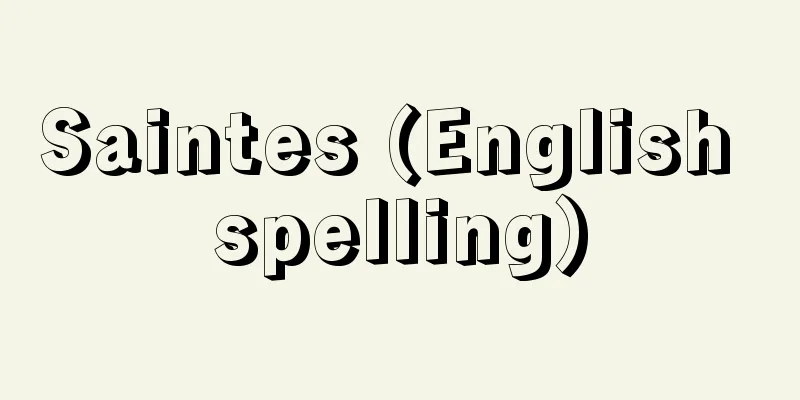Kanran Miyake

|
Year of death: August 21, 1718 (September 15, 1718) Year of birth: Enpo 2 (1674) A Confucian scholar of the mid-Edo period. His given name was Jomei, his pen name was Youkaku, and he was commonly known as Kyujuro. His pen name was Kanran. He was the son of Miyake Doetsu, a townsman and Confucian scholar in Kyoto, and the younger brother of Miyake Sekian, head of the Kaitokudo school in Osaka. In 1698 (Genroku 11), he went down to Edo, and the following year, on the recommendation of Kuriyama Senpo, he began serving the Mito domain, becoming an editor at Shokokan and working on compiling the Dai Nihonshi. In 1698 (Hoei 5), he was awarded 200 koku, and in 1708 (Hoei 5), he was promoted to gift officer, working concurrently as editor. In 1709 (Hoei 6), he drafted the "Private Discussion on the Shogun's Records," arguing that measures should be taken to treat the Shogun's records in accordance with the Chronicles, in keeping with the reality that the Shoguns of the Kamakura and Muromachi Shogunates held political power, and this was adopted. According to the preface (written by Kanran) of Kuriyama Senpo's "Hoken Daiki," Senpo advocated the theory of the legitimacy of the sacred treasures, while Kanran advocated the theory of the legitimacy existing in the law, and there was a dispute between the two. In 1774, he became the president of Shokokan, but the following year (1711), on the recommendation of Arai Hakuseki, he became a Confucian scholar in the shogunate. His works include "Chukō Kangen," which discusses the merits and demerits of Emperor Go-Daigo's politics, and "Retsushi Hōsūroku." <References> Yoshida Ittoku, "A Study of the Compilers of the Kidenshi of the History of Great Japan," "Mito City History," Volume 2, 1 (Eiichi Suzuki) Source: Asahi Japanese Historical Biography: Asahi Shimbun Publications Inc. About Asahi Japanese Historical Biography |
|
没年:享保3.8.21(1718.9.15) 生年:延宝2(1674) 江戸中期の儒学者。名は緝明,字は用晦,通称は九十郎。観瀾はその号。京都の町人儒者三宅道悦の子で,大坂懐徳堂の学主三宅石庵の弟。元禄11(1698)年江戸に下り,翌年栗山潜鋒の推薦で水戸藩に仕え,彰考館編修となり『大日本史』編纂に従事。13年200石を給され,宝永5(1708)年編修兼務で進物番に昇進。6年「将軍伝私議」を草し,鎌倉・室町幕府の将軍が政権を掌握している実態に即し,将軍伝を本紀に準じて取り扱う策を講ずべしと論じ,採用された。栗山潜鋒著『保建大記』の序文(観瀾筆)によると,潜鋒は神器正統論を,観瀾は正統在義論を唱えて両者の間に論争があったという。7年彰考館総裁に就任したが,翌正徳1(1711)年新井白石の推薦で幕府の儒官に転じた。後醍醐天皇の政治の得失を論じた『中興鑑言』をはじめ,『烈士報讐録』などの著がある。<参考文献>吉田一徳『大日本史紀伝志表撰者考』,『水戸市史』中巻1 (鈴木暎一) 出典 朝日日本歴史人物事典:(株)朝日新聞出版朝日日本歴史人物事典について 情報 |
Recommend
footing
...A structure that transfers vertical loads from...
Nuu tribe (Angry tribe) - Nuu (English spelling) Nù zú
One of China's ethnic minorities. They live ma...
Kubu people - Kubu tribe (English spelling)
A Bedda ethnic group found scattered throughout th...
Salamander - Japanese giant salamander
A general term for amphibians in the Caudata order...
Okansen Dance - Okansen Dance
This was a performing art that was held on a spec...
Ojoko - Memorial service
〘Noun〙 A Buddhist ceremony to pray for rebirth in ...
Gesshin Saito
A writer from the late Edo Restoration period. Co...
Axolotl - Ahoro-toru (English spelling) axolotl
A salamander of the family Ambystomatidae in the ...
air shower
…Nuclear cascades usually develop into complex sh...
《Arrowsmith》 - Arrowsmith
...In "High Street," an idealistic youn...
Cliffside - Cliffside
...A deciduous shrub of the Betulaceae family tha...
Naomori Sakazaki - Upside-down weight
A military commander from the Sengoku to the earl...
Tabarestan (English spelling)
A region of Iran on the southeastern coast of the ...
Ambras Codex - Ambrasshahon
...The author was a clergyman from Bavaria or Aus...
Platypus lewisi (English spelling) Platypuslewisi
…It is found throughout Japan, boring holes in br...









